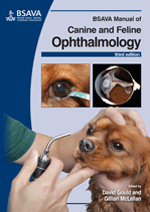
Full text loading...

The first step in clinical evaluation of the eye involves direct ophthalmic examination. However, there are occasions when significant extraocular disease or opacification of ocular media prevent direct visualization of intraocular structures. Under these circumstances, diagnostic imaging provides valuable information about the extent and character of the disease process. This chapters deals with radiography; ultrasonography; magnetic resonance imaging; computed tomography; imaging features of ocular disease; imaging features of orbital disease; advances in imaging technology.
Diagnostic imaging of the eye and orbit, Page 1 of 1
< Previous page | Next page > /docserver/preview/fulltext/10.22233/9781910443170/9781910443170.2-1.gif

Full text loading...























